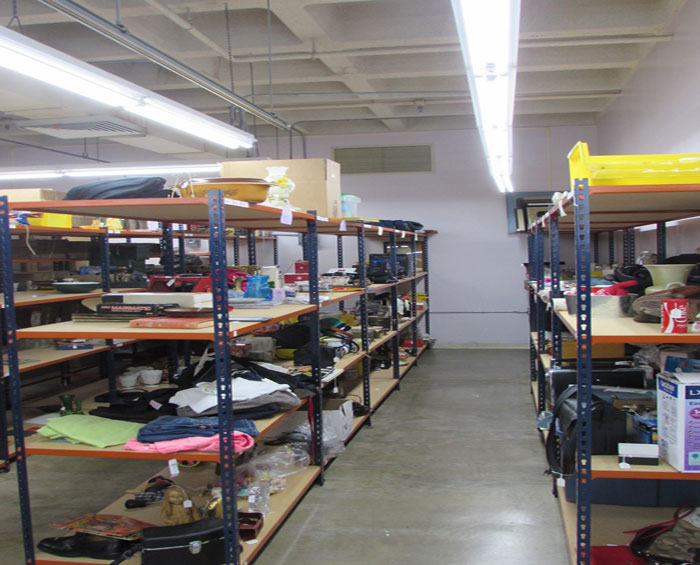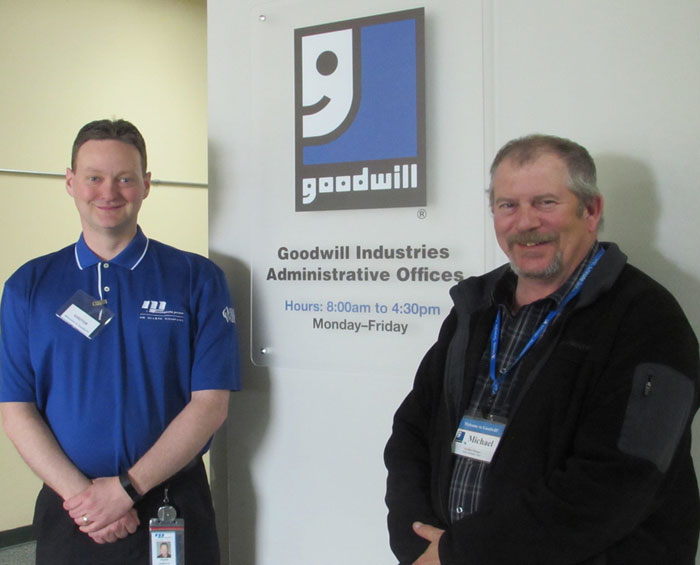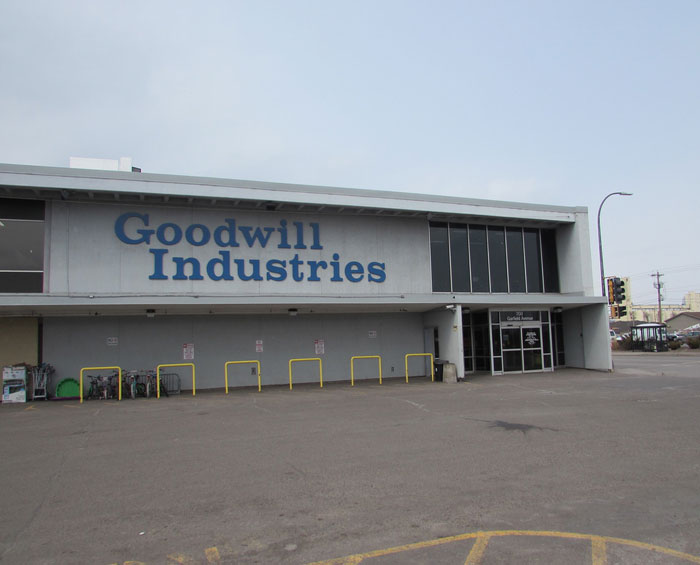Goodwill Industries lights up with LEDs — indoors and out
May 8, 2018
The retail store at Goodwill Industries’ flagship facility in Duluth, Minn., is a bright, cheerful place. Tidy racks of color-coordinated clothing, shelves of gleaming appliances and attractively displayed children’s items invite visitors to stay and shop. Overhead, rows of energy-efficient, light emitting diode (LED) fixtures and bulbs show off the store and its merchandise in the best possible light.
The lights were installed as part of a recent project that upgraded all of the interior and exterior lighting at the organization’s main building to state-of-the-art LEDs.
Minnesota Power was a partner in the transformation, which has improved the environment for both employees and visitors and is expected to save the nonprofit thousands of dollars per year on its electric bills.
Aging building had lighting challenges
Goodwill Industries provides employment services, training and jobs to people with disabilities and other barriers to employment. Built in the 1960s as a Goldfine’s department store, the nonprofit’s 125,000-square-foot facility at 700 Garfield Ave. houses a variety of activities that support its mission. The building is a drop-off site for donations, a sorting and recycling facility, a warehousing and distribution center, a mattress deconstruction site, a retail outlet and headquarters for program services and administrative offices.
Lighting had long been a concern in the aging building. Prior to the LED conversion, the sorting facility and parking lot were illuminated with outdated metal halides. The retail store, offices, restrooms and other areas used fluorescent lighting. Both of these technologies use far more energy than LEDs, grow dim over time and burn out frequently. This led to significant replacement costs and dark, dingy conditions for employees—particularly in the sorting area.
“It was like a dungeon in some places,” said Tedd Ells, director of operations. “We were running into problems retaining workers.”
Goodwill Industries turned to Minnesota Power
Looking for ways to save money and improve the environment for staff, clients and customers, Goodwill’s leadership team turned to Minnesota Power for energy-efficient lighting recommendations.
“This is a huge facility with hundreds of fixtures,” said Minnesota Power energy analyst Chad Trebilcock. “We came in and took lighting counts, noted wattages and calculated savings in usage and demand. Savings estimates and potential rebates were impressive.”
“They presented a fairly substantial report,” said Mike Smart, facilities, transportation and safety manager. He joined Goodwill Industries in August 2017, shortly after the study was completed, and led the conversion project. “I had to get up to speed pretty quickly.”
Smart was familiar with LEDs but initially had questions about whether LEDs could deliver appropriate lighting levels with half the wattage of metal halides. A sample overhead floodlight was brought in, which quelled his concerns.
“Holy mackerel!” Smart said. “They turned it on, and it was like the sun—a big, big difference.”
“When customers are unsure of a technology, Minnesota Power likes to provide a sample so they can familiarize themselves with how it functions and looks,” Trebilcock said. “You wouldn’t buy a car without test driving it, right? I look at this the same way. We want customers to be comfortable with their decisions.”
Armed with information from Minnesota Power, Goodwill Industries found a contractor, Ideal Energy Solutions, willing to lease the LEDs at no upfront cost. Over the course of several weeks, crews systematically replaced the lighting—inside and out. Officials credit Minnesota Power with getting the project off the ground.
“Having a subject matter expert like Minnesota Power come to the table, analyze what was needed and provide direction gave us the capacity to find a vendor we could partner with in a lease agreement and get the project completed with no capital expenditure,” Ells said. “Plus we got a rebate, which was much larger than we anticipated.”
Benefits of energy efficiency are powerful
The LED upgrade qualified Goodwill Industries for more than $24,000 in Power of One Business rebates from Minnesota Power. It is expected to lower the facility’s monthly electric demand by 98 kW and reduce annual electric usage by nearly 305,000 kWh. This will save the nonprofit around $22,000 per year on its utility bills. The long-lasting LEDs will require less maintenance and could even reduce summer cooling costs because they do not generate as much heat as the lights they replaced.
The transformation already is having profound effects. The ambience and working conditions have improved throughout the facility, and new LED exterior lights have enhanced safety, security and visibility. Employees and shoppers noticed the change.
“We have received a lot of really positive comments and compliments; it has been a substantial change,” Smart said. “This is a busy place. People with various levels of functionality are sorting through donated goods and trying to determine whether something is the type of quality we want to put in our store, and there are lots of tables and moving carts. Being able to see well is pretty important.”
Mission-focused nonprofit puts savings to work
As far as cost savings, it all goes back to the mission of employing and empowering the people that Goodwill Industries serves. The organization also is considering a solar photovoltaic system as it works to become a more sustainable community resource.
“We try to manage our costs and resources to the greatest extent possible so we can advance our mission of providing training and work for clients,” said Smart, a U.S. Army veteran who values this mission-focused approach. “Savings are dollars that can be put back into our mission.”
That’s what folks at Minnesota Power like to hear.
“We are here to help customers,” Trebilcock said. “Our goal is to help them manage their energy costs so their businesses can be more successful and strengthen our region economically.
Profiles of other customers helped by Minnesota Power’s Conservation Improvement Program can be found at www.mnpower.com/EnergyConservation/CustomerProfiles.
For information about how you or your business can save energy, click here.





